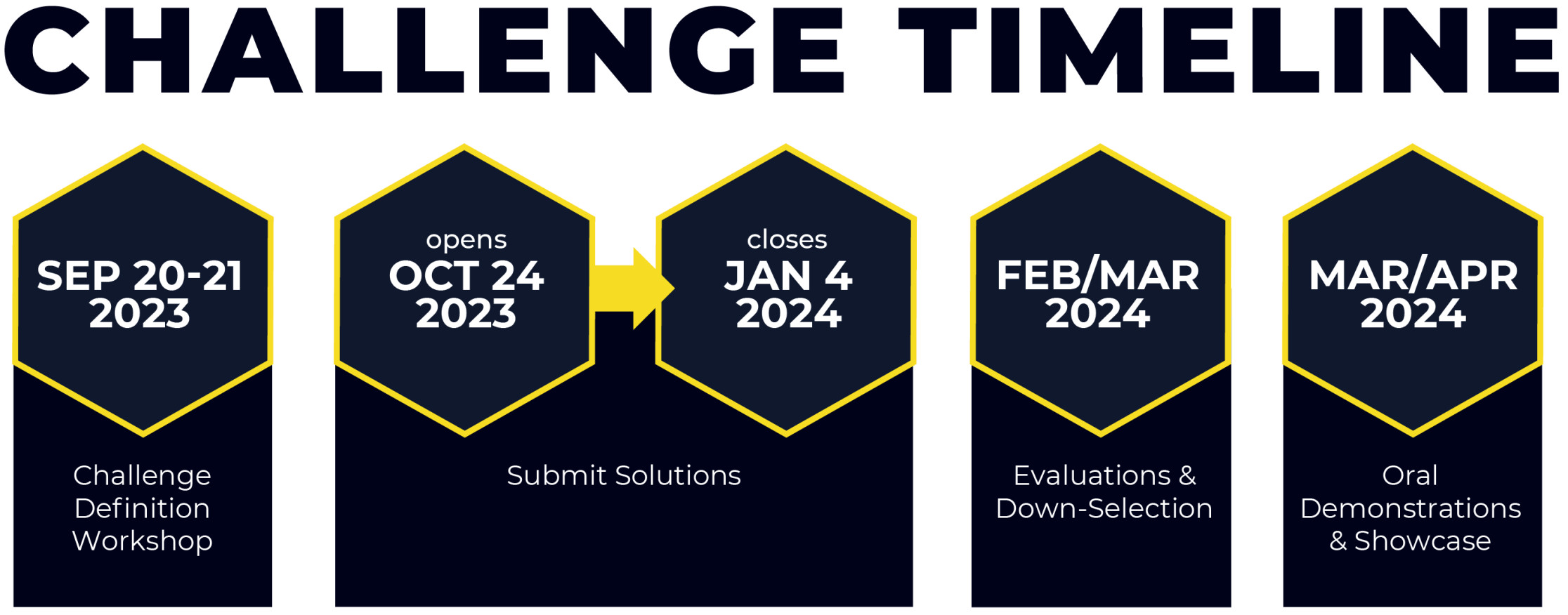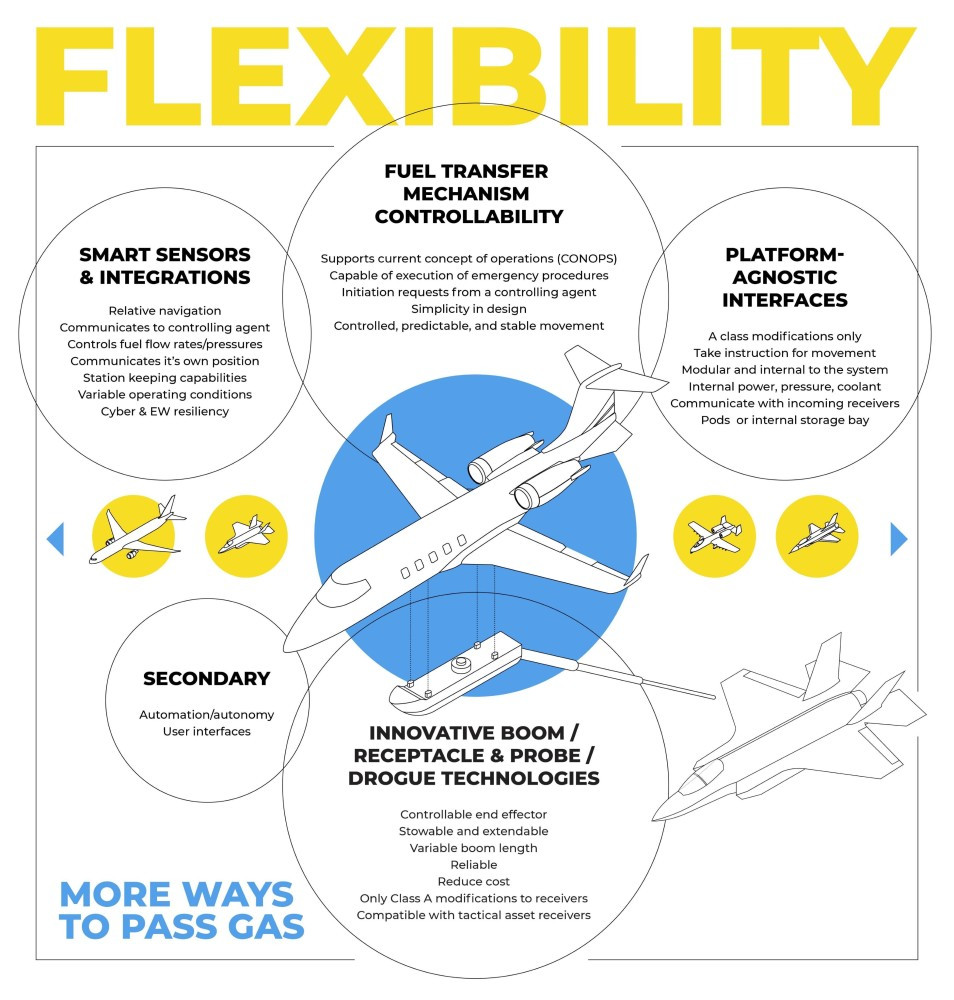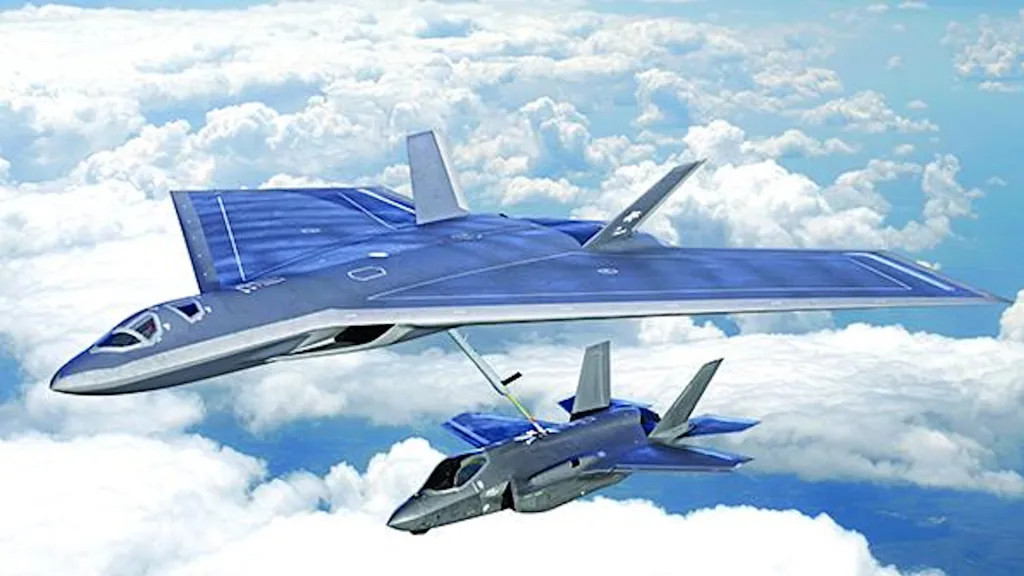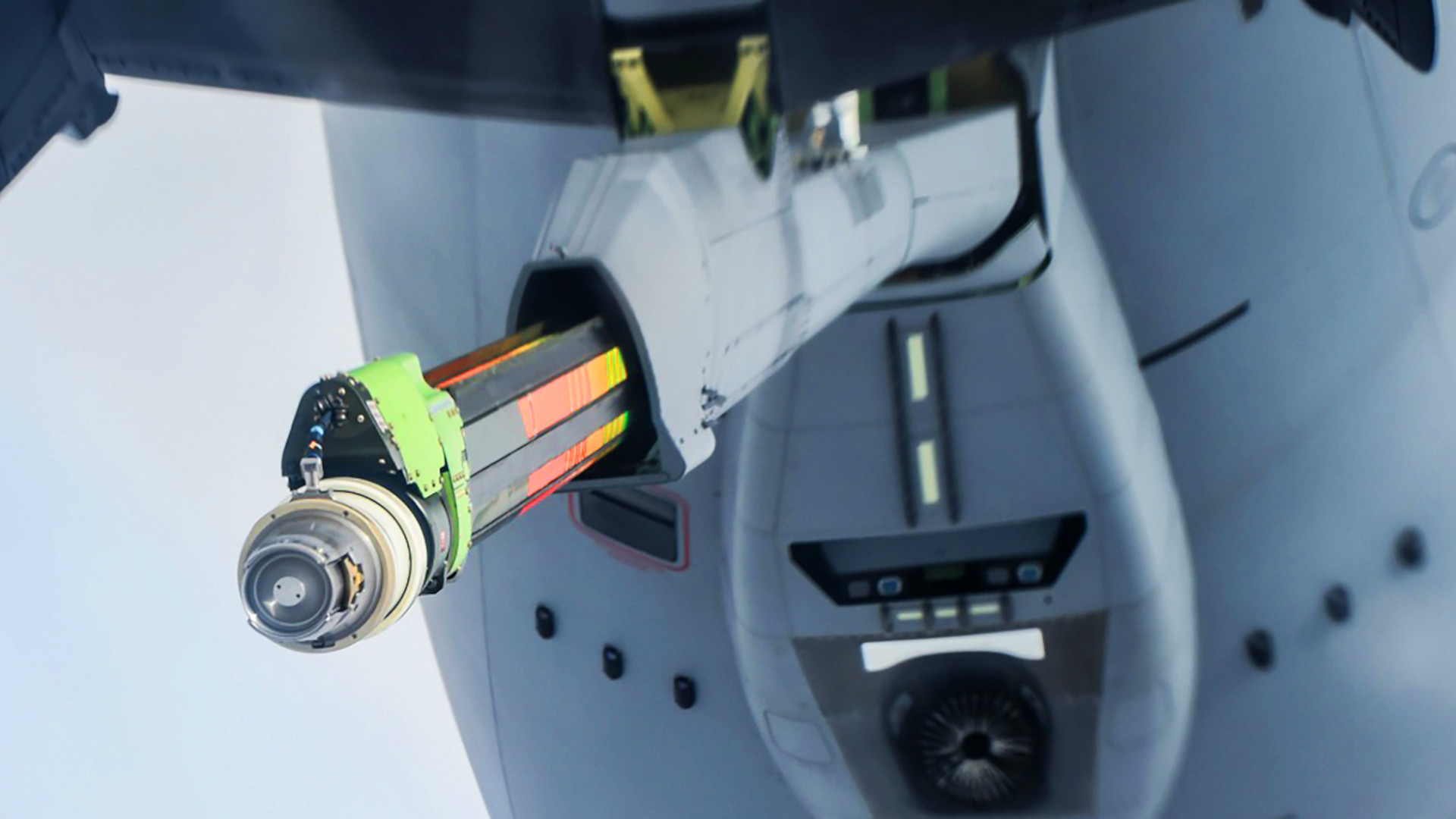The U.S. Air Force recently awarded contracts to two companies for work on SHARK ‘buddy store’ podded aerial refueling systems able to work with aircraft that use the boom method to get gas in flight. The service has been eyeing a pod like this for years now, which could turn a host of different aircraft, including crewed tactical jets like the F-15, as well as drones, into small tankers amid increasing demand for aerial refueling capacity that would only grow further in a future high-end fight.
On August 27, the Air Force Research Laboratory (AFRL) awarded Legionnaire International a contract valued at $3,193,251 for work relating to a Small Hybrid Aerial Refueling Kit (SHARK). Two days later, Leidos subsidiary Dynetics received a separate SHARK contract from AFRL valued at $2,677,093. Aviation Week‘s Steve Trimble was first to report on the initial SHARK contract to Legionnaire International.

Both SHARK contract award notices simply say they have to do with a “small form factor fuel transfer mechanism that fits inside of a modular, platform agnostic, podded, outer mold line.” The overall requirements and objectives for the SHARK effort are unknown. It is also unclear whether Legionnaire International and Dynetics are now working separately or cooperatively. The War Zone has reached out to Legionnaire International, Leidos, and AFRL for more information.
SHARK looks to be related, at least in part, to an Air-to-Air Refueling Mechanism (A2RM) Digital Design Challenge that AFWERX, an Air Force technology incubator within AFRL, announced last year. A2RM “aims to leverage recent technological advancements in automated aerial refueling to modernize fuel transfer systems for smaller, more flexible refueling capabilities” and “initial scoping for design considerations should focus on preliminary use for the F-15,” according to AFWERX.
The A2RM challenge, which stopped taking submissions in January and that AFWERX said previously it expected would lead to a showcase of down-selected proposals sometime in March-April of this year, included four specific focus areas. These were Innovative Boom / Receptacle & Probe / Drogue Technologies, Fuel Transfer Mechanism Controllability, Platform-Agnostic Interfaces, and Smart Sensors & Integrations.

While the exact relationship between SHARK and A2RM is unclear, the latter effort included a call for an extremely similar-sounding “highly platform agnostic “podded” and “internally stowable” system that “needs to stow within system Outer Mold Line (OML).” The entire “apparatus” would be “capable of a boom/receptacle refueling (at a minimum), with a desire for dual boom/receptacle and probe/drogue refueling.”
Further requirements included a 36-inch diameter and a 230-inch length to enable the possibility of the entire system fitting inside a modified 600-gallon drop tank. The “objective is to fit in [an] even smaller profile of ~330 gal external fuel tank (more universally used across USAF & USN),” according to AFWERX. One A2RM graphic, seen below, also showed a notional gondola-like system with what looked to be a retractable and/or collapsible refueling boom. A business jet was also depicted as a potential platform to carry the system, along with a larger twin-engine airliner/commercial freighter-type design and various tactical combat jets, including the stealthy F-35 Joint Strike Fighter and A-10 Warthog ground attack aircraft.

The A2RM challenge further outlined an interest in “solutions that stow their own fuel, solutions that receive fuel from host aircraft, and especially interested in capabilities that can do both,” as well as ones “compatible with fielded refueling technology (relative navigation sensors, pumps/valves, automation, station keeping systems, etc)” and that “leverage technology that can be matured & [made] integratable” no later than Fiscal Year 2026.
It is important to note that buddy store aerial refueling pods are not new, but historically have been designed around the probe-and-drogue method. Probe-and-drogue is the predominant method employed by the U.S. Navy and U.S. Marine Corps, as well as many U.S. allies and partners.

However, the vast majority of U.S. Air Force aircraft use the boom method, instead. Booms offer a faster fuel transfer rate, reducing the time tankers and receivers (especially larger ones like bombers, cargo aircraft, and even other tankers) have to be linked, reducing their vulnerability. Boom tankers are also therefore able to top up more total aircraft in less overall time than it would take with a probe-and-drogue system.
The Air Force has already been exploring podded aerial refueling capabilities to support receivers configured for the boom method at some level since at least 2019. Last year, in its proposed budget for the 2024 Fiscal Year, the Air Force disclosed that it had completed a design for what it described as a “small, pod-mounted tactical air refueling boom,” but provided no further details. The current status of that project and how it may or may not relate to SHARK is unknown.
It’s also worth pointing out that a future SHARK pod might not feature a boom as it is traditionally understood. The website for an entity called TactiFuel says that it is a “student team” that “first came together through the University of Colorado Boulder’s Designing for Defense program” and subsequently “worked hand in hand with the US Air Force Research Laboratory to design a Small Hybrid Aerial Refueling Kit (SHARK) prototype.” That prototype design, called Vampire, involved a “controllable end effector” that “will be able to refuel any NATO aircraft, including those that traditionally require a 30’+ boom directed into the receptacle,” according to TactiFuel.

Overall, “the USAF aims to leverage recent technological advancements in automated aerial refueling to modernize fuel transfer systems for smaller, more flexible refueling capabilities,” according to one AFWERX notice about the A2RM challenge. “These new systems will enable the USAF to perform tactical refueling missions akin to the United States Navy’s (USN) buddy tanking, enable automated aerial refueling capabilities, and provide flexibility for mission planners & joint strike packages, to name a few. … The capability is primarily intended to refuel medium to small ‘fighter’ sized aircraft.”
There are questions about the general viability and practicality of a buddy aerial refueling store that can top up aircraft equipped to get fuel via the boom method. To this day, boom-equipped tankers have dedicated operators who ensure the connections with receiving aircraft are made safety.
Historically, those individuals have been physically positioned at the rear of tankers to have a clear view of what they are doing. Serious issues with the hybrid 2D/3D Remove Vision System (RVS) on Boeing KC-46 tankers, which boom operators use to perform their tasks from the main cabin, underscore the general complexities involved in this type of aerial refueling. A smaller, lighter, shorter, and/or collapsible boom might present additional challenges by presenting a less robust link and putting the receiver closer to the aircraft carrying the pod. The booms on traditional tankers have been known to break under the wrong circumstances, as was just recently seen in a mishap off the coast of California last month. Altogether, no matter how the SHARK pod is configured, actually employing one attached to a single-seat tactical jet, or a pilotless drone, could be a challenging proposition.

In this context, A2RM’s focus on the F-15 platform as the carrier makes good sense, as a two-seat combat jet like the F-15E Strike Eagle or F-15EX Eagle II could better manage this workload thanks to the additional crew member. F-15-series jets are also just relatively large aircraft with significant existing internal fuel capacity.
Boeing, as well as Airbus, have been actively working on technology to increasingly automate the process of refueling in mid-air by boom, including demonstrations showing how these capabilities could be used to gas-up drones, as well. It’s also worth noting here that the ability to refuel drones in flight and for drones to refuel other aircraft (including other uncrewed ones) in mid-air using the probe-and-drogue method have also been demonstrated publicly. The Navy is in the process of acquiring MQ-25 Stingray tanker drones that will use probe-and-drogue buddy stores.


Whether a podded boom refueling system would be able to carry a useful amount of fuel to offload is another open question. At the same time, The War Zone has highlighted in the past how drones, in particular, equipped with a buddy store like this could be used in a hub-and-spoke arrangement, ferrying fuel from tankers operating outside of the range of enemy threats to receivers operating at the tactical edge. Larger stealthy tankers, which the U.S. Air Force has also been exploring, would help push this layered tanking concept into more contested airspace.

Overall, the potential value of a distributed tanking ecosystem for the U.S. military, as well as its allies and partners, only looks set to grow amid expanding and evolving air defense threats among near-peer competitors like China and Russia, as well as smaller adversaries like Iran and North Korea. This, in turn, will also create additional demands for more and better ways to get fuel to stealthy platforms operating in higher-risk areas, while also keeping prized aerial refueling assets safe.
In a potential future high-end fight against China in the Pacific, there would be an added ‘tyranny of distance’ further magnified by Air Force and other friendly aircraft operating in a distributed manner to help reduce their vulnerability to enemy attacks. Traditional tankers would have to operate very far forward to support new expeditionary and distributed concepts of operations emerging across the U.S. military, including Air Force ones collectively referred to as Agile Combat Employment (ACE). Larger aircraft may not be able to land at many forward operating locations, either.
Buddy stores that can refuel aircraft via the boom method would offer a valuable organic asset to those forward-deployed forces, even if just for topping off after launch. This would also help enable tactical aircraft to take off with more stores (but less fuel) from shorter runways and still be able to reach their target areas. These are tactics that U.S. Navy and Marine Corps aircraft can leverage now using probe-and-drogue buddy stores, as well as smaller C-130-based tankers.
In addition, the Air Force continues to face shortfalls in overall aerial refueling capacity while demand grows in peacetime. This, in turn, has now long raised serious concerns about its ability to provide gas-on-the-go to friendly aircraft during a potential all-out conflict, such as a high-end fight in the Pacific against China. As such, boom refueling pods attached to various aircraft could help provide badly needed additional aerial refueling capacity, overall.
The Air Force has raised the possibility that some of its future Collaborative Combat Aircraft (CCA) drones, which it hopes to buy hundreds, if not thousands of in the coming years, could be capable of refueling in mid-air. This would further increase the demand for aerial refueling capacity. It’s interesting to note here that one AFWERX A2RM graphic, seen below, depicts a notional drone design being refueled in flight via a boom.

All of this comes as the Air Force is facing the prospect of at best severely truncated budgets in the coming years. A major review of the plans to acquire a new crewed sixth-generation stealth combat jet as part of the Next Generation Air Dominance (NGAD) modernization initiative has shown that even projects previously described as top priorities are not safe from serious cuts. This can only prompt questions about the service’s previously stated plans to acquire more survivable tankers no later than 2040, the centerpiece of its broader Next-Generation Air-Refueling System (NGAS) effort.
“There . . . will likely have to be some commitment beyond the Air Force to get the kind of development money and procurement [funding] that it takes to actually make that payment,” now-retired Air Force Lt. Gen. Richard Moore, then Deputy Chief of Staff for Plans and Programs, said about the service’s future tanker plans at the Aerial Refueling Systems Advisory Group’s annual symposium in April, according to Aviation Week. “But until we know what the options are, we don’t even have an idea what that looks like.”
Whatever the Air Force’s aerial refueling ecosystem might look like going forward, the recent SHARK contracts show continued interest in new buddy stores that can connect to receivers that use the boom method being a part of it.
Contact the author: joe@twz.com
